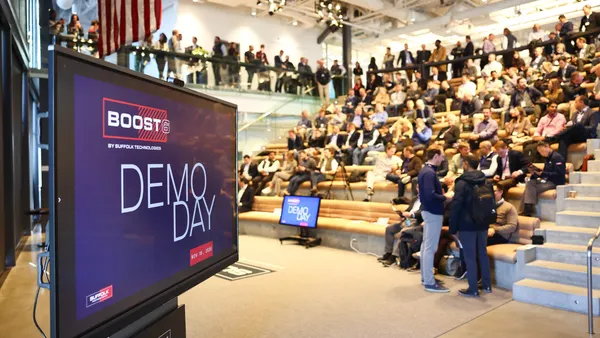As digital solutions expand in the AEC industry, building relationships and trust by sharing information more freely across firm boundaries is imperative for all project stakeholders.
Newforma, in conjunction with the Dodge Construction Network and the Construction Progress Coalition, conducted a new study “Finding Common Ground: The Future of Project Information Management,” to gain deeper insights into how the management and flow of project information affect the AEC industry and successful construction project delivery.
This year’s theme “Finding Common Ground” examines the pain points of sharing information across external firm boundaries and speed bumps with exchanges of information at critical points in the project life cycle including the design process and the handoff from design to construction. By identifying where information bottlenecks in key workflow processes are occurring, project teams can focus improvement efforts on the areas that most significantly impact the project and the firm.
The findings from this year’s research clearly indicate that the industry is ready for a change in basic assumptions required to achieve the common goal of improving collaboration. However, the question regarding who takes the first step may still be an obstacle to overcome.
The barriers to freely sharing information are not obvious. Both human and technology impediments are cited in this year’s findings.
There are a few major themes that surfaced in the study:
- Lack of standard processes to share project information across external firm boundaries.
- Disparate systems used by each party require human intervention to transfer information.
- Transparency regarding sharing of information remain barriers to effective external collaboration.
Many firms cannot find the information needed to make informed decisions. This is a major challenge for sixty-nine percent of this year’s respondents. However, survey results also reveal that project decisions are often tracked through email (59%) and meeting minutes (76%). Key information which is stored in unstructured formats is more difficult to find. In addition, the lack of standard processes on how this information is managed creates inconsistencies from project to project, which further complicates the problem.

Two-thirds of respondents are still struggling with collaborating and sharing information with people externally. In addition, over half of respondents (58%) cite that information is not getting to them in a timely manner. And when information is shared, over half (54%) of architects and engineers and most (61%) contractors commonly receive incomplete information.
Survey respondents (61%) cite a decrease in productivity due to manual administrative tasks as the number one impact on project performance. The industry is still challenged with each party needing a specific software solution that is not addressed by other platforms. Yet, firms may not be taking advantage of the software integrations that exist today.
Furthermore, when manual effort is involved with sharing information across external parties, errors are occurring. Many respondents (47%) cite human error as the biggest challenge to effectively collaborating across project stakeholders. Errors commonly occur when data is manually entered across different platforms. In addition, information communicated primarily through email is also subject to human error through delays in forwarding, distribution list issues and emails getting lost in personal inboxes.

Project information that is not synchronized across software systems was also reported as a challenge impacting effective collaboration by one-quarter of respondents. Miscommunication may occur when information is out of synchronization between stakeholder platforms. If all parties are not on the same page with document versions, schedule changes, or issues found, friction between parties is likely to occur.
In addition to technology barriers, transparency, trust and expectation setting also get in the way of open sharing of information between external project team members.
When sharing information outside of their organization, more than half of respondents (57%), cannot track the status of items shared outside their organization. This lack of visibility once information is transferred to another party’s system often results in communication issues that impact team relationships.
In our study’s thought leadership roundtable forum, a contractor shared his thoughts on how collaboration can be improved; “Having transparency and trust enables faster workflows, more transparency into the project and frankly a level of trust that allows us to remove that minutia that constantly is just stringing us along on projects. So, whether it be costs, schedule delays, coordination delays, or just communication between stakeholders, it affects the entire life cycle of a project.”
Setting expectations early in how and why information will be used may be the key to more open sharing of information. Openness with teams on how information will be used also creates a level of transparency that builds trust. A roundtable participant from a leading architectural firm shared “It is not only trust, but it's also expectations. If you know at the beginning of the job that I'm handing this over to the contractor and I'm handing it over to the owner, you know that there are certain aspects that have to be in alignment with their expectations of how they're going to use it.”
Download the full study.










